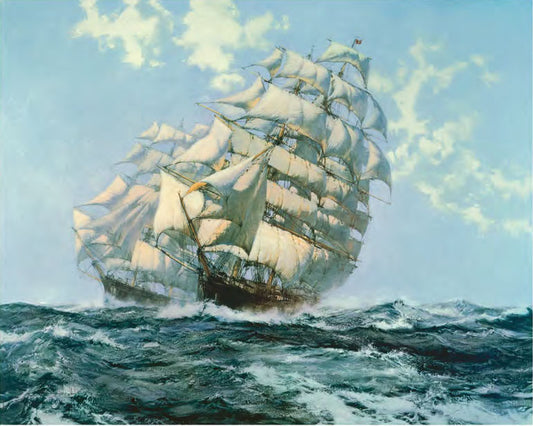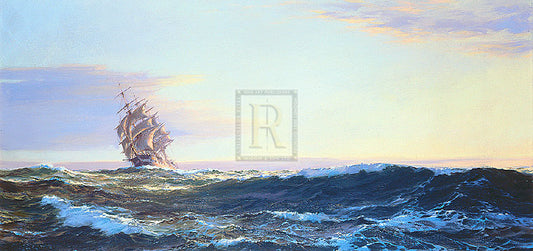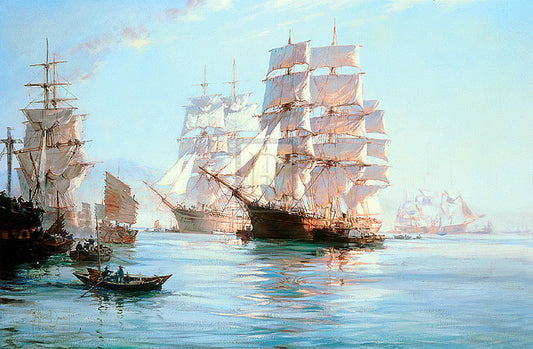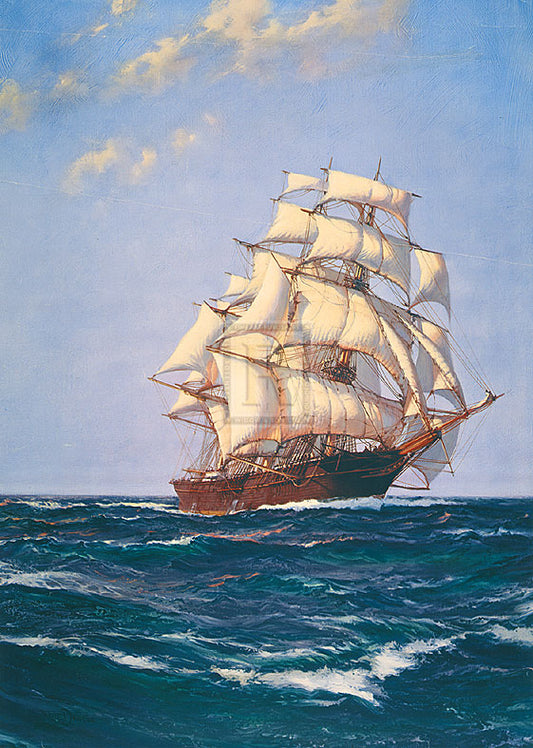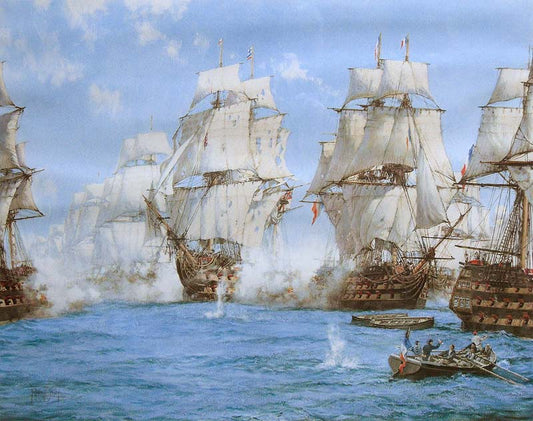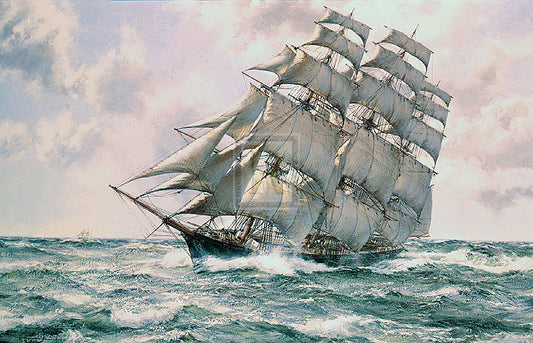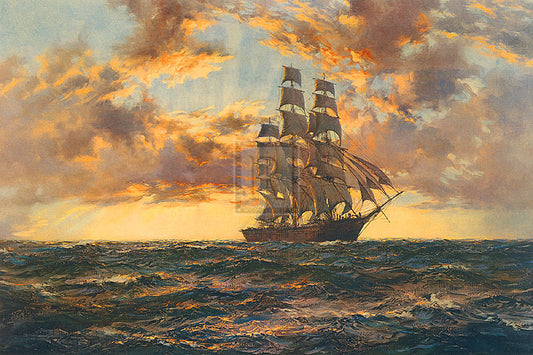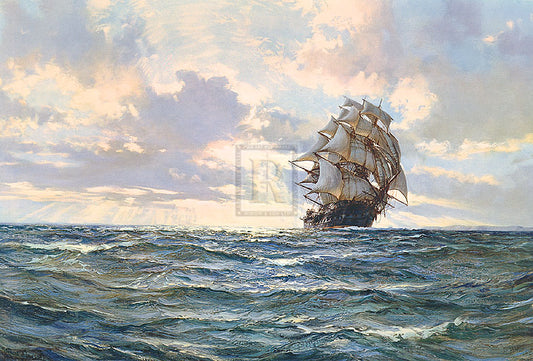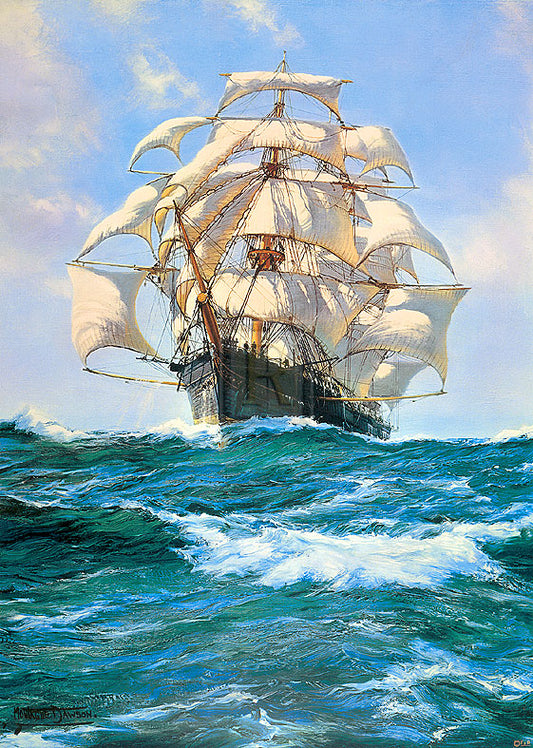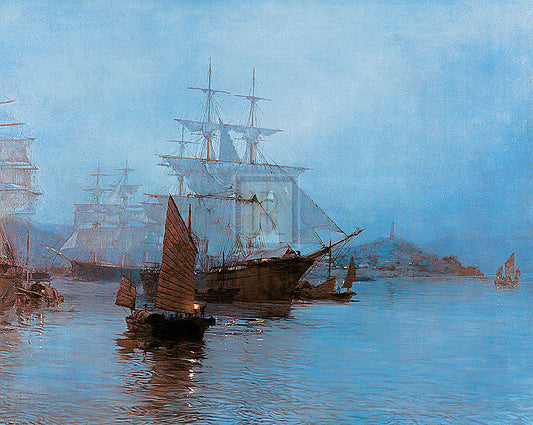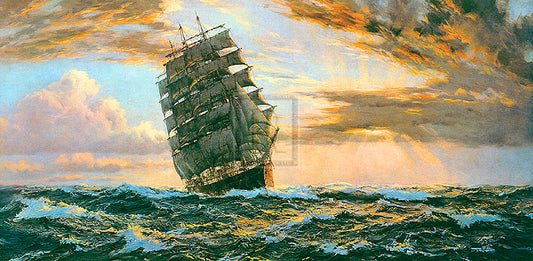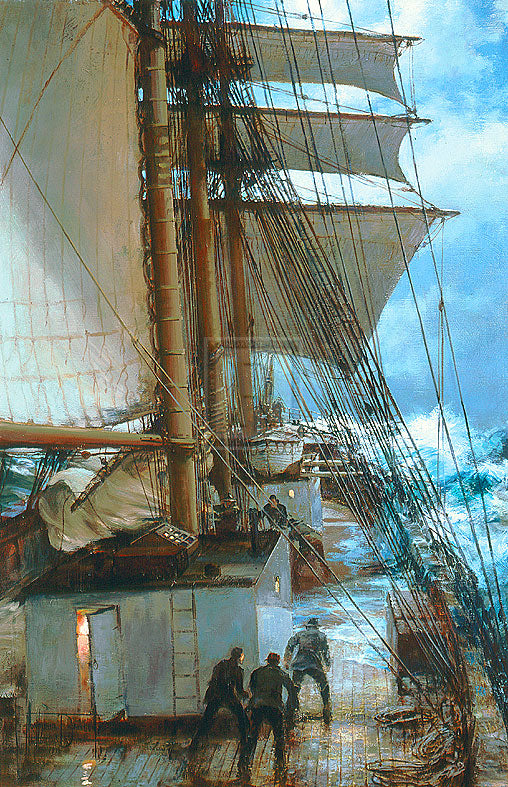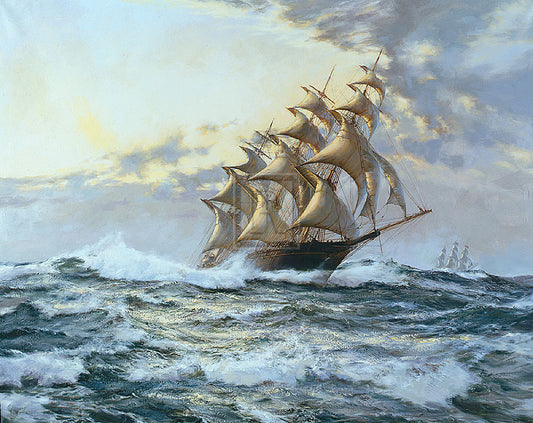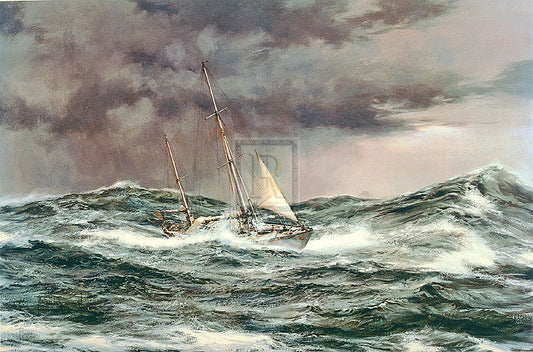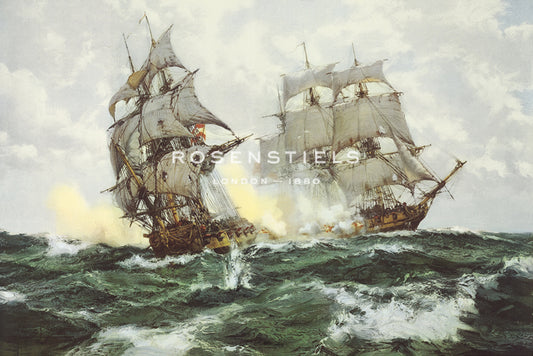Collection: Montague Dawson
Limited edition prints on paper and on canvas after the great marine artist Montague Dawson.
Montague Dawson's renown rests principally on his skill in depicting the great clipper ships in the "days of sail" in the late 19th Century. Collectors of his early paintings included Queen Elizabeth II and American Presidents of the time, including Dwight Eisenhower and Lyndon Johnson.
The canvas prints are made using the high-quality digital goutelette process and are clear-varnished. There is a two-inch clear border all round to wrap around and secure to the stretcher.
NB Prices are quoted excluding VAT at 20% which will be
added to orders delivered within the UK only.

Collapsible content
About Montague Dawson
Montague Dawson became perhaps the greatest painter of the sea and sailing ships of the first part of the 20th century. His original paintings are scarce and extremely expensive and many of the original 20th century signed colour prints are now faded, lost or damaged.
His father and grandfather were both marine painters and this maritime background was reinforced when, early in his life, his family moved to Smugglers House on Southampton Water, on England's south coast. Dawson never went to art school but, around 1910, he joined a commercial art studio in London, working on posters and illustrations.
Joining the Royal Navy at the outbreak of the First World War, Dawson met Charles Napier Hemy who was to have a great influence on the young man's art.
Dawson had supplied illustrations to the Sphere magazine during the First World War and after the war set up as a painter and illustrator. He concentrated on historical subjects and sailing ships, usually under full sail on the deep ocean. He achieved great commercial success starting in the 1920's, showing at the Royal Academy from 1916 to 1936 and regularly at the Royal Society of Marine Artists, of which he was a member.
Dawson moved to Milford-on-sea in Hampshire in the 1930s. In the Second World War, he illustrated events of the war for the Sphere and afterwards continued a painting career that was financially one of the most successful of the 20th century, dying in Sussex in 1973.
-
Ariel and Taeping - Montague Dawson
Regular price From £295.00 GBPRegular priceUnit price / per -
Golden Dawn - Montague Dawson
Regular price From £145.00 GBPRegular priceUnit price / per -
The Windsor Castle - Montague Dawson
Regular price From £230.00 GBPRegular priceUnit price / per -
Pirates' Cove - Montague Dawson
Regular price From £165.00 GBPRegular priceUnit price / per -
The White Clipper - Montague Dawson
Regular price From £150.00 GBPRegular priceUnit price / per -
Spindrift Preparing to Leave Foochow - Montague Dawson
Regular price From £120.00 GBPRegular priceUnit price / per -
Sovereign of the Seas - Montague Dawson
Regular price From £140.00 GBPRegular priceUnit price / per -
The Battle of Trafalgar - Montague Dawson
Regular price From £900.00 GBPRegular priceUnit price / per -
Up Channel II - Montague Dawson
Regular price From £120.00 GBPRegular priceUnit price / per -
The Tall Ship - Clipper Kaisow - Montague Dawson
Regular price From £140.00 GBPRegular priceUnit price / per -
The Silvered Way - Montague Dawson
Regular price From £165.00 GBPRegular priceUnit price / per -
Wind and Sun - Montague Dawson
Regular price From £140.00 GBPRegular priceUnit price / per -
Pagoda Anchorage - Montague Dawson
Regular price From £145.00 GBPRegular priceUnit price / per -
Racing Home - The Cutty Sark - Montague Dawson
Regular price From £240.00 GBPRegular priceUnit price / per -
The Golden West - The Pamir - Montague Dawson
Regular price From £140.00 GBPRegular priceUnit price / per -
The Silver Moon - Montague Dawson
Regular price From £160.00 GBPRegular priceUnit price / per -
The Rising Wind on Deck Aboard - Montague Dawson
Regular price From £310.00 GBPRegular priceUnit price / per -
Gale Force Eight - Montague Dawson
Regular price From £160.00 GBPRegular priceUnit price / per -
The Pride of the Ocean - Cutty Sark - Montague Dawson
Regular price From £120.00 GBPRegular priceUnit price / per -
The Lightning - Montague Dawson
Regular price From £145.00 GBPRegular priceUnit price / per -
The Fleet Messenger - Montague Dawson
Regular price From £160.00 GBPRegular priceUnit price / per -
Crescent Moon - Montague Dawson
Regular price From £285.00 GBPRegular priceUnit price / per -
Horn Abeam - Montague Dawson
Regular price From £160.00 GBPRegular priceUnit price / per -
The Days of Adventure - Montague Dawson
Regular price From £260.00 GBPRegular priceUnit price / per

